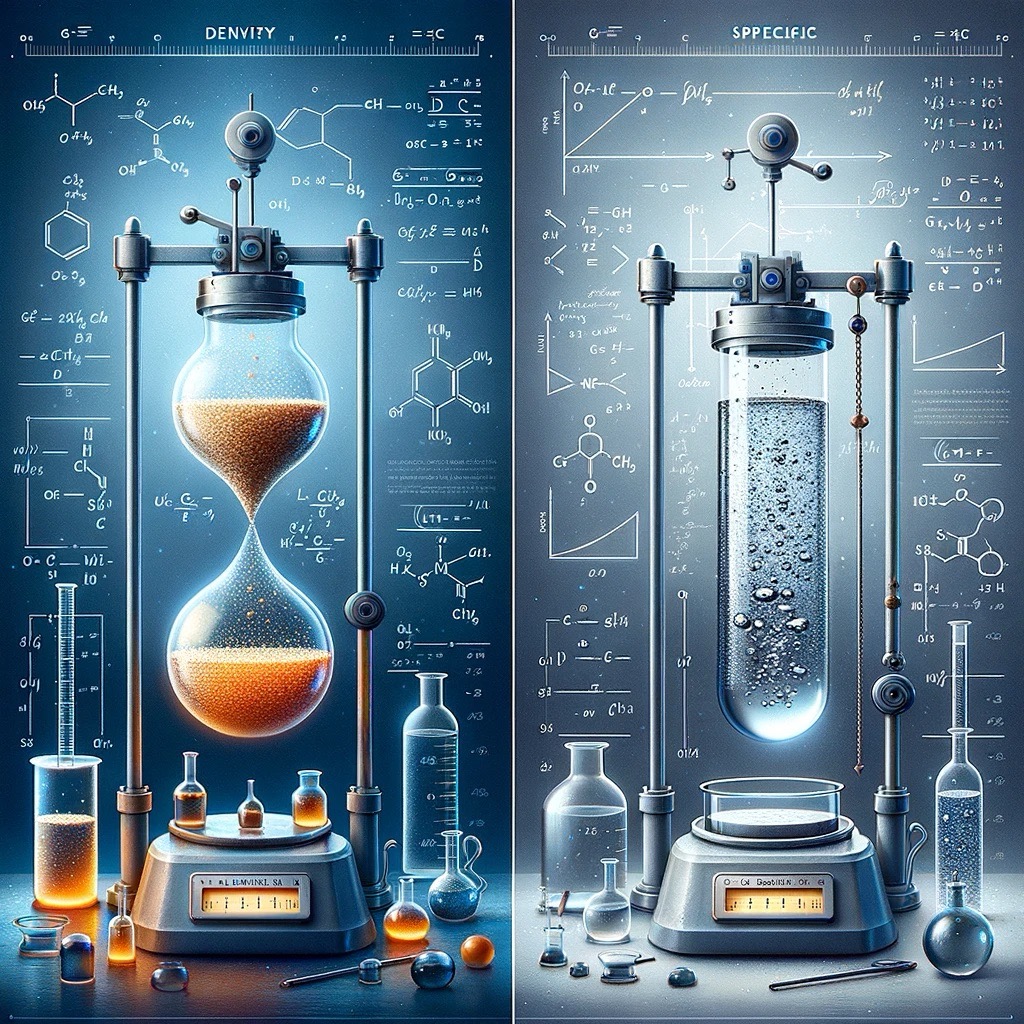Difference Between Density and Specific Gravity
by Yogi P - October 30, 2023
Difference Between Density and Specific Gravity | Density vs Specific Gravity
Density and specific gravity are two important concepts in physics and engineering that are often used to describe the properties of materials, particularly liquids and solids. While they are related, they represent different measurements and have distinct applications.
Let’s explore the differences between density and specific gravity.
What is Density?
Density is a measure of how much mass (or matter) is contained in a given volume of a substance. It is typically expressed in units such as kilograms per cubic meter (kg/m³) or grams per cubic centimeter (g/cm³). Here are the key characteristics and applications of density:
| Aspect | Density |
|---|---|
| Measurement | Represents the mass of a substance per unit volume. |
| Units | Common units include kg/m³, g/cm³, and lb/ft³, among others. |
| Independence | Density is independent of the substance’s size or shape. |
| Relative Comparison | Used to compare the mass of different substances at the same volume. |
| Practical Applications | Used in various fields, including materials science, engineering, and chemistry, to characterize materials. |
Density provides a measure of how tightly packed the particles of a substance are within a given volume. It is a fundamental property used to identify and characterize materials.
What is Specific Gravity?
Specific gravity, on the other hand, is a dimensionless (unitless) ratio that compares the density of a substance to the density of a reference substance, typically water. It is expressed as a number without units. Here are the primary characteristics and applications of specific gravity:
| Aspect | Specific Gravity |
|---|---|
| Measurement | Represents the ratio of the density of a substance to the density of a reference substance (usually water). |
| Units | Specific gravity is a dimensionless number and has no units. |
| Independence | Specific gravity is independent of the substance’s size or shape. |
| Relative Comparison | Used to compare the density of a substance to the density of water. |
| Practical Applications | Commonly used in industries like brewing, winemaking, and petroleum to determine the concentration of solutes in a liquid. |
Specific gravity provides a relative measure of how dense a substance is compared to water. It is often used in practical applications, such as determining the sugar content in beverages or the density of fluids.
Key Differences:
Measurement:
- Density measures the mass of a substance per unit volume.
- Specific gravity represents the ratio of the density of a substance to the density of a reference substance (usually water) and is dimensionless.
Units:
- Density is expressed in units such as kg/m³, g/cm³, or lb/ft³.
- Specific gravity is unitless and is represented as a number.
Independence:
- Both density and specific gravity are independent of the size or shape of the substance being measured.
Relative Comparison:
- Density is used to compare the mass of different substances at the same volume.
- Specific gravity is used to compare the density of a substance to the density of water or another reference substance.
Practical Applications:
- Density is used in various scientific and engineering applications to characterize materials.
- Specific gravity is commonly used in industries like brewing, winemaking, and petroleum to determine the concentration of solutes in liquids.
In summary, density measures mass per unit volume and is expressed in units, while specific gravity is a dimensionless ratio comparing the density of a substance to a reference substance (usually water). Specific gravity is often used in practical applications to assess the concentration or density of substances in liquids.










